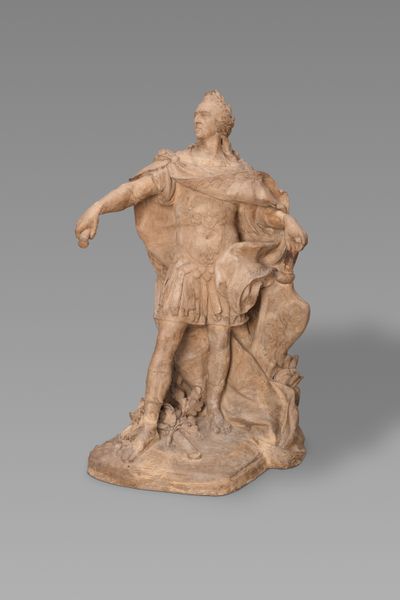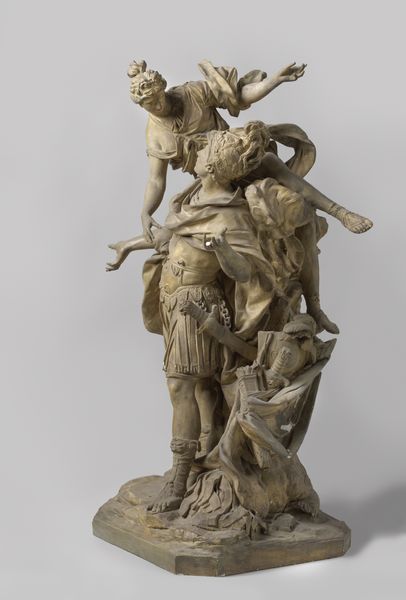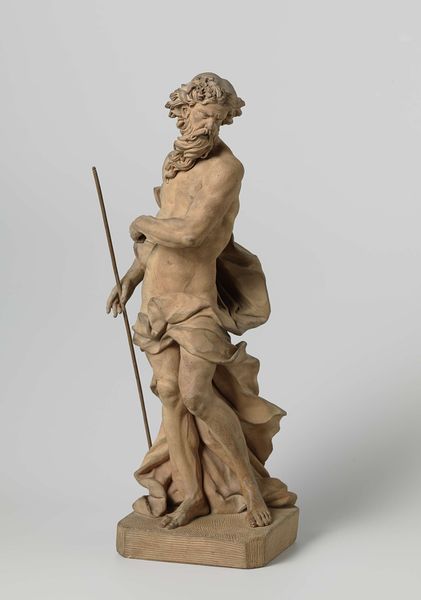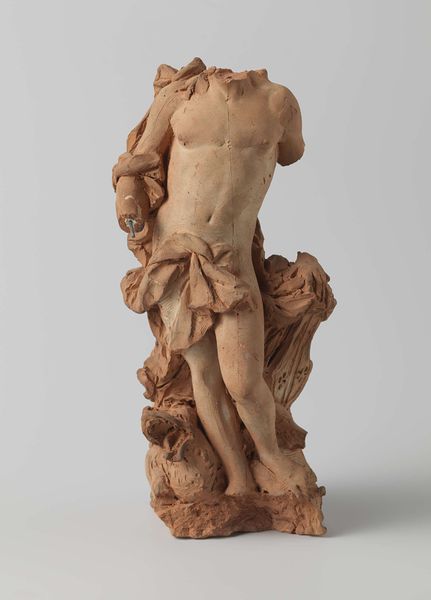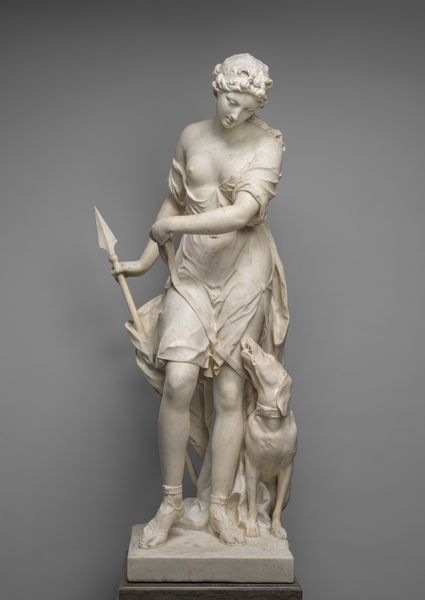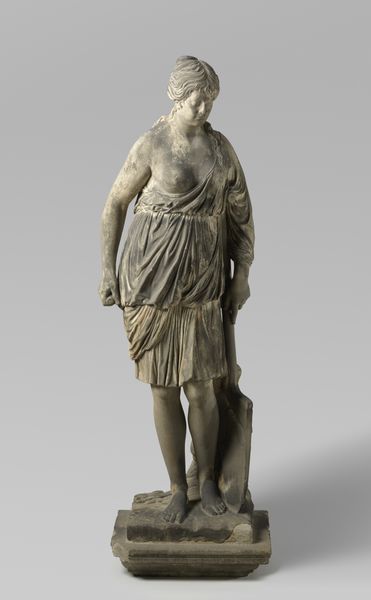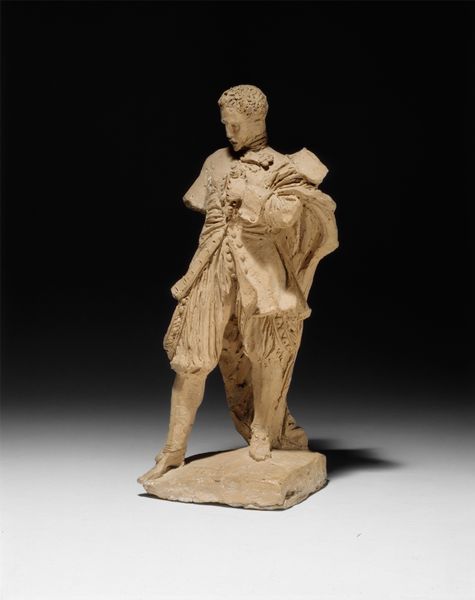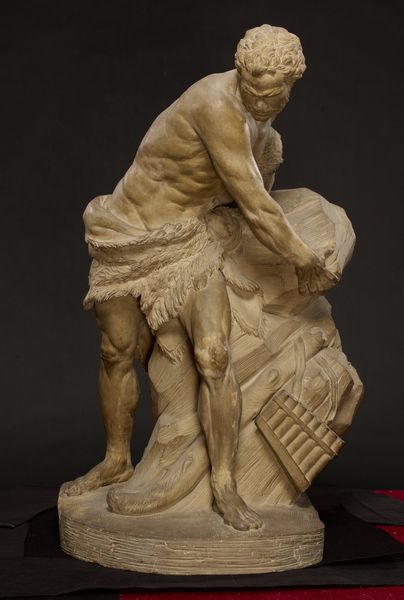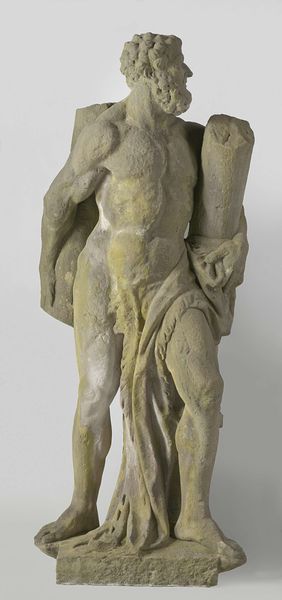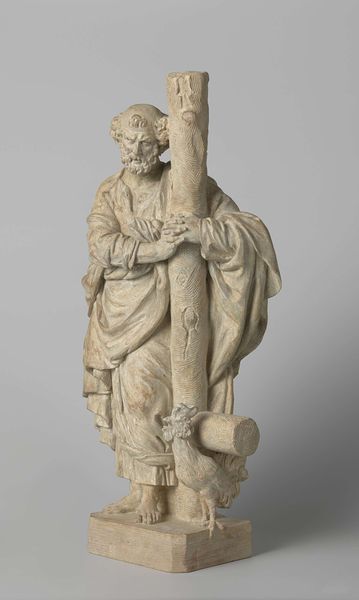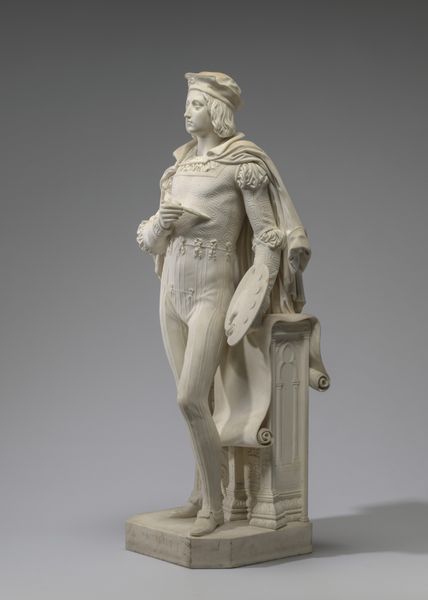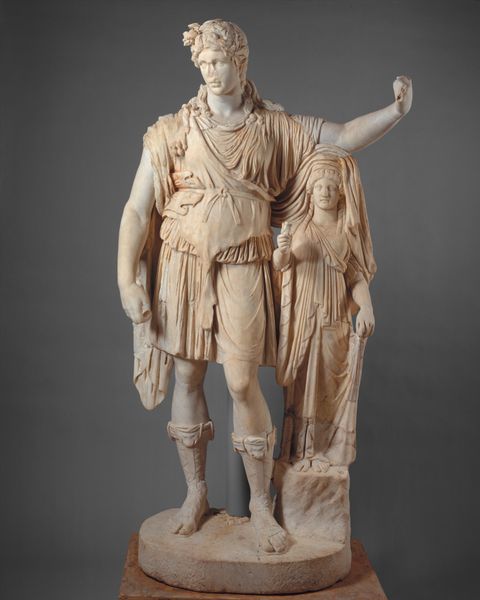
sculpture, terracotta
#
portrait
#
baroque
#
sculpture
#
figuration
#
sculpture
#
history-painting
#
terracotta
#
statue
Dimensions: height 52.5 cm, width 18.5 cm, depth 15 cm
Copyright: Rijks Museum: Open Domain
Editor: We're looking at a terracotta sculpture called "Mars" made in 1757 by Willem Hendrik van der Wall. There's something commanding about its presence, maybe because of the way the figure is posed. How do you interpret this work, considering its historical context? Curator: Seeing this “Mars”, especially knowing it’s from 1757, brings to mind how classical imagery was used to project power and legitimacy during the Baroque period. Van der Wall isn’t just creating a representation of the Roman god of war, but also tapping into centuries of established visual language. Consider how the elite used art to construct their authority. Does the choice of terracotta, rather than marble or bronze, change that reading for you? Editor: That's interesting. It does feel like the terracotta makes it slightly less overtly imposing compared to what I might expect from marble. It makes me think more about its accessibility in the artist's time. Was terracotta used because it was cheaper and more available? Curator: Exactly! Think about the social hierarchy and artistic patronage systems of the 18th century. Was this piece commissioned by a wealthy individual looking to connect with an idealized past, or perhaps intended for a more public, didactic function? The material itself signals a specific purpose and audience. Also, how would the presentation, location, or placement affect this piece's reception in the late 1750's? Editor: It sounds like unpacking this work isn't just about admiring it aesthetically, but more about understanding its role in a broader political landscape. I hadn’t thought so deeply about the effect of terracotta versus more conventional sculptural materials. Curator: Precisely. And that understanding enriches our viewing experience immeasurably. Considering artwork's context reveals the politics and complex power dynamics. It becomes about interrogating what was at stake during its creation. Editor: That's a totally different way to appreciate art, not just looking at beauty, but at purpose and access, too.
Comments
No comments
Be the first to comment and join the conversation on the ultimate creative platform.

